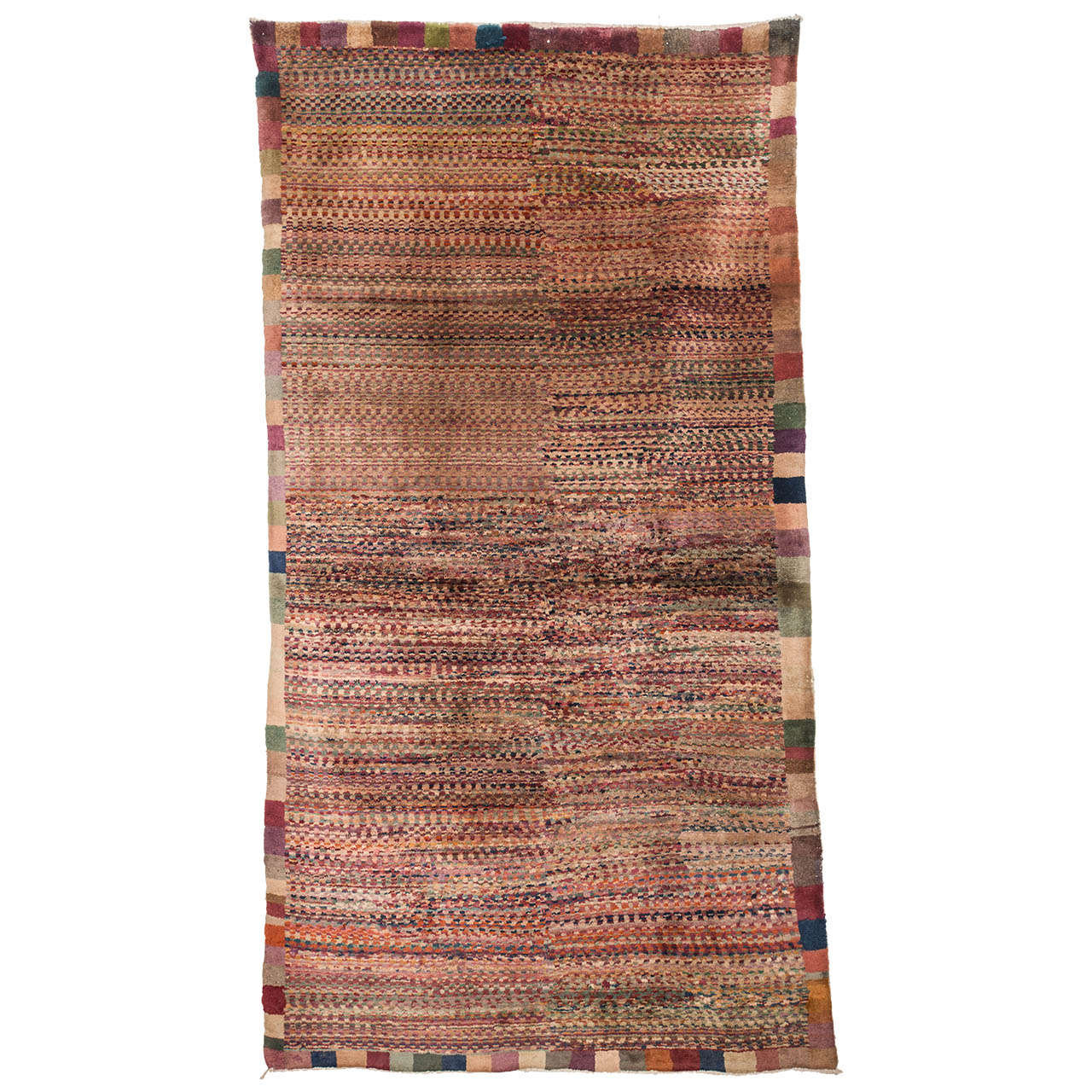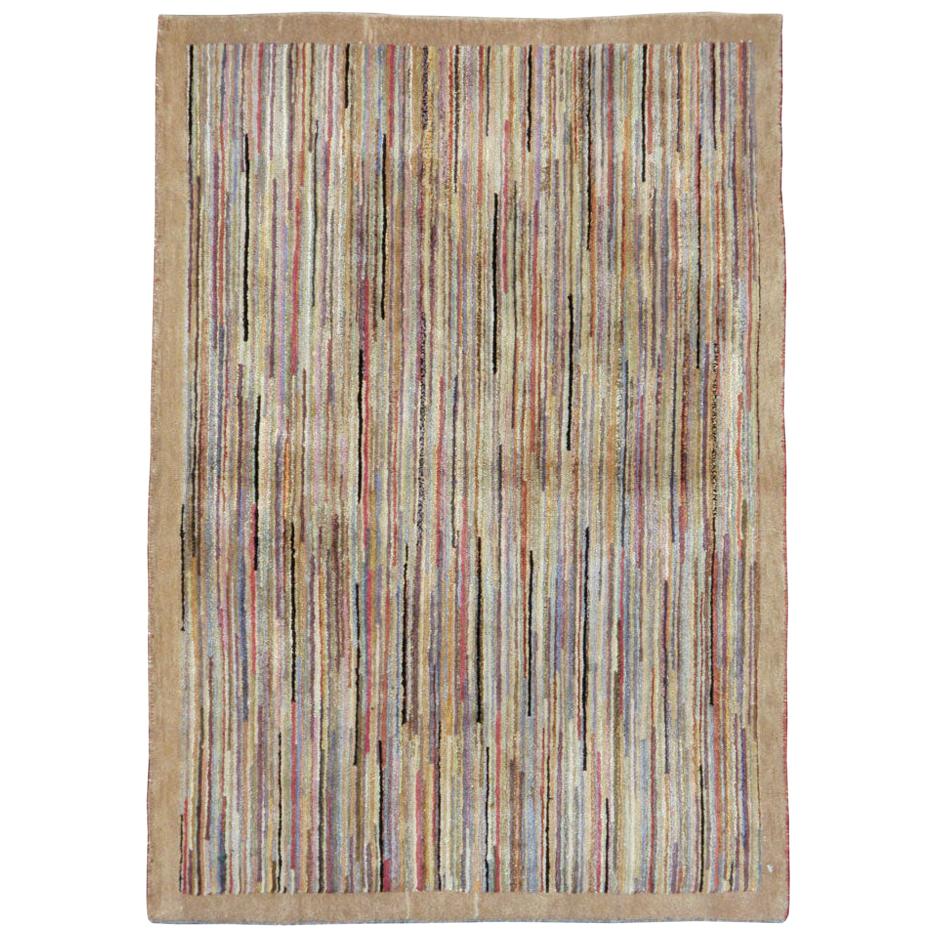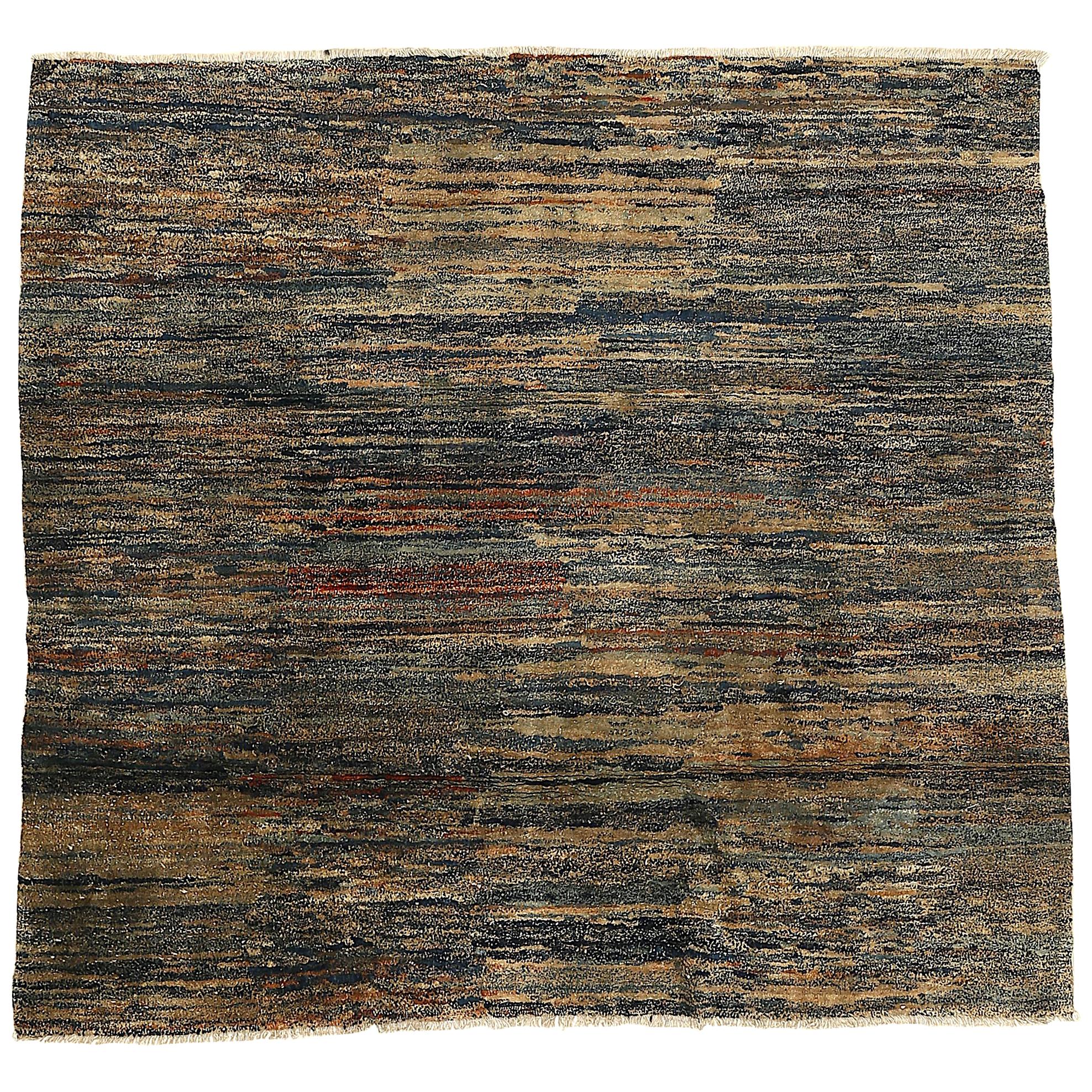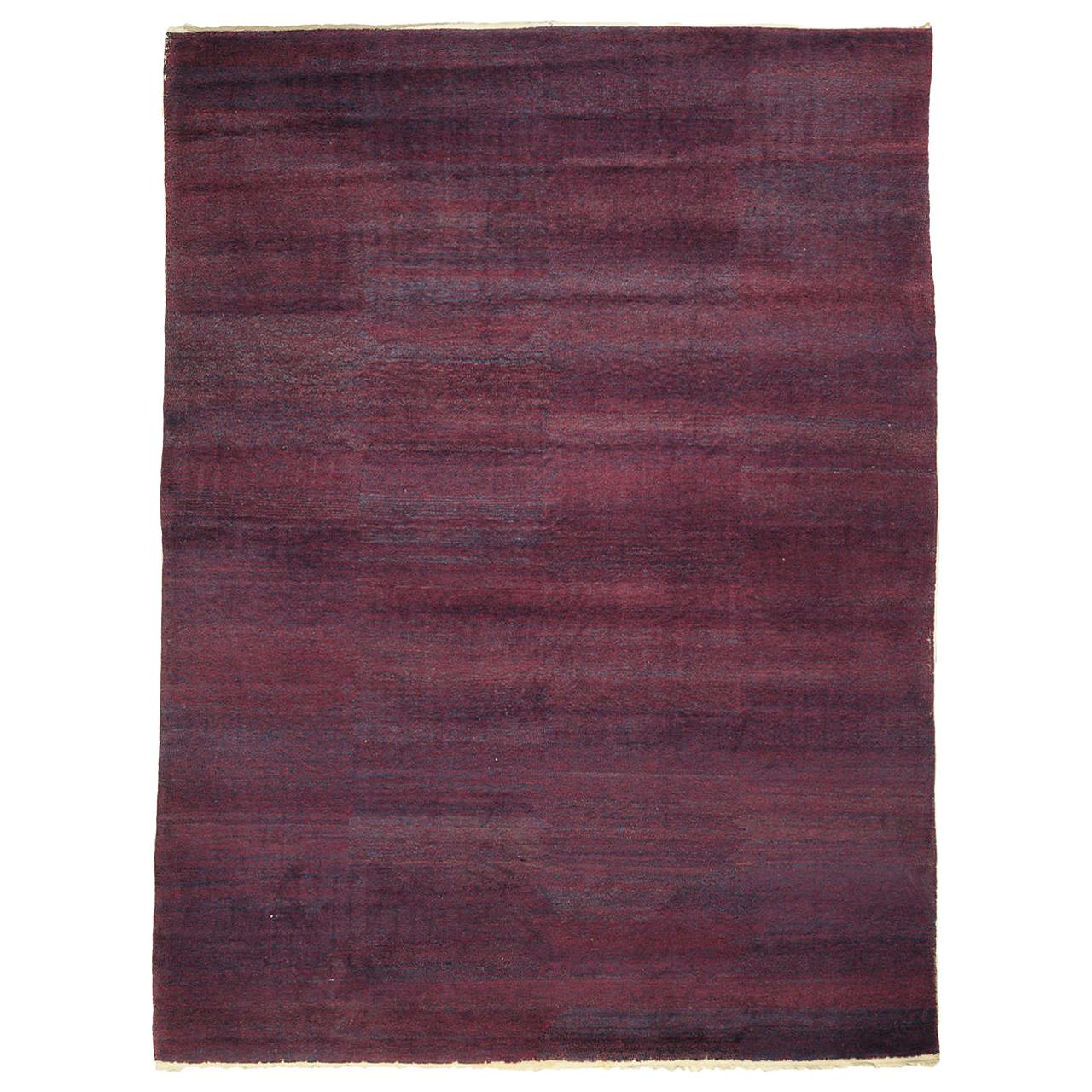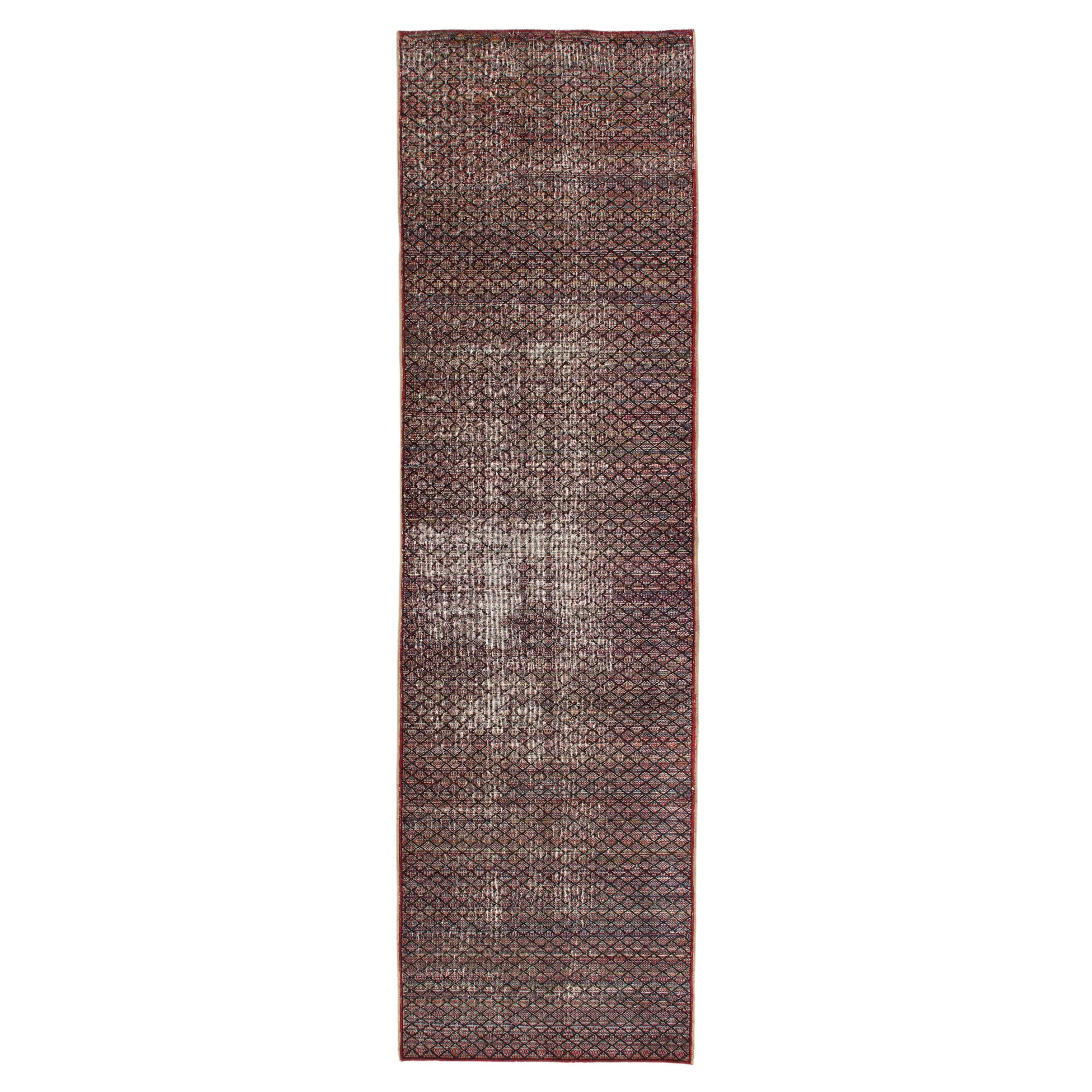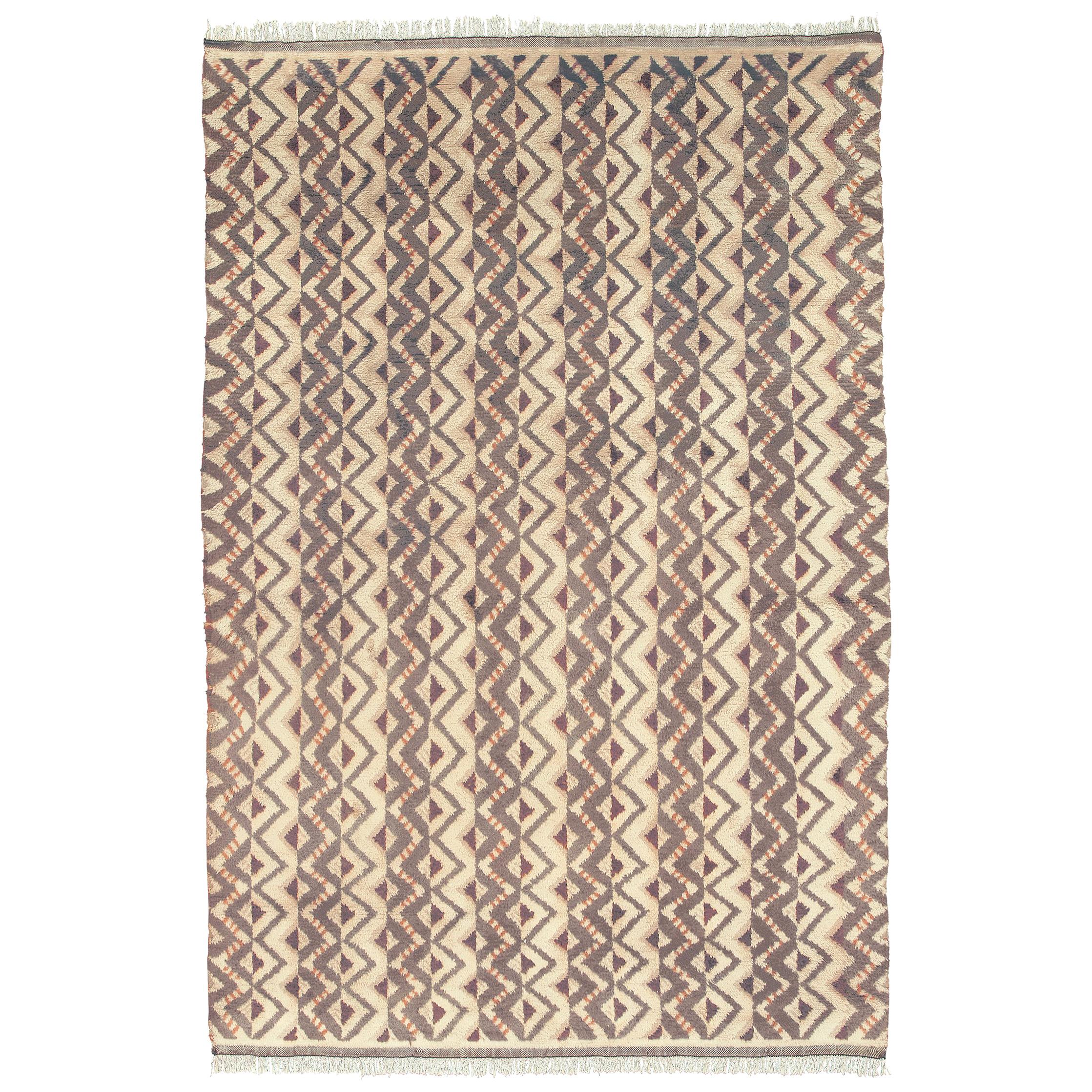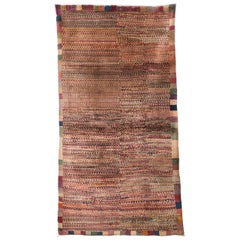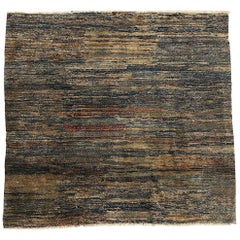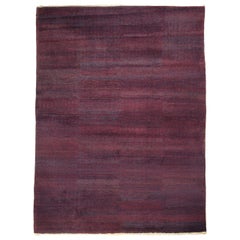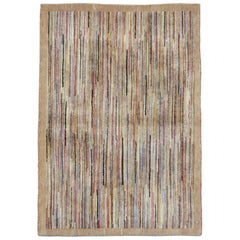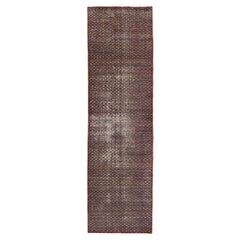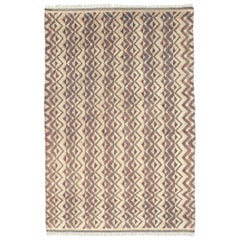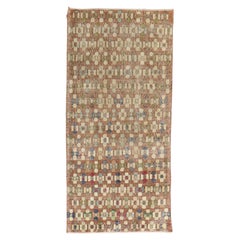Items Similar to Art Deco Chinese Rug with Abstract Pattern
Want more images or videos?
Request additional images or videos from the seller
1 of 9
Art Deco Chinese Rug with Abstract Pattern
$1,901.80
£1,416.25
€1,600
CA$2,625.70
A$2,910.97
CHF 1,529.83
MX$35,625.52
NOK 19,106.01
SEK 17,932.91
DKK 12,181.87
About the Item
The painterly effect obtained by mixing varying proportions of ivory and colored wools is peculiar to this family of northern Chinese weavings. As most of these were sourced directly in China one is led to think that they weren’t intended as export items but rather to satisfy a local commission. These are almost always woven in small formats, sometimes embellished by longevity ideograms or other auspicious symbols. One is left to wonder what could have inspired the weavers to come up with something so intrinsically abstract and modern.
About the Seller
5.0
Recognized Seller
These prestigious sellers are industry leaders and represent the highest echelon for item quality and design.
Gold Seller
Premium sellers maintaining a 4.3+ rating and 24-hour response times
Established in 1997
1stDibs seller since 2012
207 sales on 1stDibs
Typical response time: 1 hour
- ShippingRetrieving quote...Shipping from: Milan, Italy
- Return Policy
Authenticity Guarantee
In the unlikely event there’s an issue with an item’s authenticity, contact us within 1 year for a full refund. DetailsMoney-Back Guarantee
If your item is not as described, is damaged in transit, or does not arrive, contact us within 7 days for a full refund. Details24-Hour Cancellation
You have a 24-hour grace period in which to reconsider your purchase, with no questions asked.Vetted Professional Sellers
Our world-class sellers must adhere to strict standards for service and quality, maintaining the integrity of our listings.Price-Match Guarantee
If you find that a seller listed the same item for a lower price elsewhere, we’ll match it.Trusted Global Delivery
Our best-in-class carrier network provides specialized shipping options worldwide, including custom delivery.More From This Seller
View AllMinimalist Art Deco Chinese Rug 1930's
Located in Milan, IT
The painterly effect obtained by mixing varying proportions of ivory and indigo wool is peculiar to this family of northern Chinese weavings. As most of them were sourced directly in...
Category
Vintage 1930s Chinese Art Deco Chinese and East Asian Rugs
Materials
Wool
Antique Square Chinese Rug with Abstract Design
Located in Milan, IT
A rare and unusual rug, reminiscent of a contemporary painting, decorated by an apparently casual miscellany of polychrome wools. Examples of this type hav...
Category
Vintage 1920s Chinese Art Deco Chinese and East Asian Rugs
Materials
Wool
1930s Art Deco Chinese Rug with Abstract Design
Located in Milan, IT
This rare and unusual carpet, which is perhaps more reminiscent of a contemporary painting than a weaving, is decorated with a 'salt and pepper' effect through the miscellany of red ...
Category
Vintage 1930s Chinese Art Deco Chinese and East Asian Rugs
Materials
Wool
Antique Chinese Rug with Abstract Design
Located in Milan, IT
The painterly effect obtained by mixing varying proportions of ivory and indigo wool is peculiar to this family of northern Chinese weavings. As most of them were sourced directly in...
Category
Early 20th Century Chinese Chinoiserie Chinese and East Asian Rugs
Materials
Wool
Vintage Tribal Rug with Abstract Design
Located in Milan, IT
Characterized by a polychrome background obtained through the miscellany of coloured wools, this charming tribal rug is further distinguished by an abstract looking ivory diamond ele...
Category
Mid-20th Century Turkish Tulu Turkish Rugs
Materials
Wool
Vintage Abstract Rehamna Moroccan Berber Rug
Located in Milan, IT
The plains of Marrakesh are the home of the so-called Rehamna carpets. Some of these are characterized by abstract patterns, executed as if mimicking the effect of colored brush stro...
Category
Vintage 1940s Moroccan Tribal Moroccan and North African Rugs
Materials
Wool
You May Also Like
Mid-20th Century Handmade Chinese Art Deco Throw Rug
Located in New York, NY
A vintage Chinese Art Deco throw rug handmade during the mid-20th century.
Measures: 2' 8" x 3' 9"
The Craft of the hand-knotted carpet in China, and the surrounding areas including Mongolia and Tibet, extends into the early centuries of the first millennium, C.E., but we really have a firm grasp only beginning in the later 16th century with large, very coarsely woven carpets, often depicting dragons, created for the Imperial Forbidden City palaces. Chinese carpets have always been commercial and there are no tribal groups responsible for any of the carpet weaving strains.
When the Ming Dynasty fell in 1644, with no Imperial patrons, production moved to the city of Ningxia in north central China where several workshops turned out more finely woven pieces for the Mandarins of the administrative Ch’ing bureaucracy and well-to-do merchants. Ningxia was the major Chinese carpet center up through most of the 19th century, with first allover and then medallion designs on cotton foundations in medium weaves. Palettes were initially limited to yellows, dark blue and cream, but later widened to include reds, browns and even green. These antiques were the first Chinese carpets to be exported to the West and they fitted in well with the craze for Chinese blue-and-white porcelain in the second half of the 19th century. Ningxia also wove shaped and rectangular small rugs for saddle underlays, chair (“throne”) seats and shaped backs, pillar carpets with dragons or monks for Buddhist monasteries, and long divided runners for monastery meditation halls. These small rugs are among the most collectible of all Chinese weavings.
Weavers from Ningxia set up workshops in the capital Peking (Beijing) in the 1860’s and began weaving Western room sizes for export, primarily to America. In blue – and – white and polychrome palettes, with round wreath medallions, precious objects, seasonal flowers, paeonies, lotuses, fretwork, clouds, butterflies and bats, all relatively spaciously drawn. The round “Shou” (Good Luck) character is also a prominent decorative motif. There are also a few Peking landscape pictorials with pagodas, houses, bridges, waterscapes and boats. Peking carpets were woven right up until WWII and production began again after the Cultural Revolution around 1970. They are moderately well-woven, on cotton foundations, exactingly executed and indisputably Chinese. Many are in the blue-and-white style. Nothing else looks like a Peking carpet and for a Chinese “look” in a room, they are absolutely indispensable. Sizes range from scatters and a few runners, through the popular 9’12’ size, to large carpets over 20’ which must have been special orders. The earliest Peking Revival carpets are pliable and fairly thin, but they became heavier and more compact in the 20th century, in competition with Art Deco carpets from Tientsin. The modern, post- 1970, pieces are in the traditional Peking style, but are a little too regular and neat. Exactitude has been favored over character, as hard to explain that as it is.
There are a number of all-silk and silk-and –metal thread pieces, many with inscriptions purporting to link them with rooms in the Imperial palaces, bringing very substantial auction prices, but none are really antique. The genre emerged after WWI and the present demand comes from mainland Chinese. The silk piles often Stand in pattern relief against flat woven gold metal thread grounds. The inscriptions are apocryphal, the rugs are flashily opulent, perfect for nouveaux riches.
The Art Deco period between the two World Wars saw a distinctive carpet industry developing in Tientsin (Tianjin) in northeastern China. These are highly prized for their transitional design character, neither overtly Chinese, nor abstractly modern/contemporary. Woven exclusively for export, usually by and for American firms, such as Nichols and Elbrook, they are totally in the “Jazz Age Modern” style of the 1920’s, often without borders, with abstract or abstracted patterns, and only with, at best, a few Chinese-y pattern elements. Vases asymmetrically placed in the corners are features of some of the more Chinese-y carpets. Open fields with floral sprays and branches growing in from the edges are anther design innovation. Often, Chinese motives have been re-imagined in more sharp-edged, abstract manners. Some have no references whatsoever to natural elements. The patterns are sharp and the rugs are never subdued, soft or restrained. The rugs are heavily constructed, with crisp, unfading dyes and medium to medium coarse weaves on cotton foundations. All are extremely well-executed, with none of the vagaries, variations or twists found on even high-quality Persian rugs. The majority are in the 9’ by 12’ format and a surprising number can be found in top condition. There also was a substantial production in Peking from, especially from the Fette factory. Elliptical and round carpets, and lighter, often pastel colors, were a specialty. Nothing looks like an Art Deco Chinese and they work well with traditional Chinese furniture and the most modern decor as well. These is no substitute for a good Chinese Art Deco carpet.
Chinese carpets also include small scatters from Tibet, with high quality wool, floating dragons and allover textile patterns. The colors of vintage and modern pieces are bright, but there are antique small rugs...
Category
Mid-20th Century Chinese Art Deco Chinese and East Asian Rugs
Materials
Wool
Vintage Mid-Century Art Deco Style Runner Rug
Located in New York, NY
This vintage Art Deco rug was handmade in Turkey circa mid-20th century. It is in the style of Zeki Muren, a multidisciplinary Turkish artist, known for his bold, geometric, and whim...
Category
Vintage 1960s Turkish Art Deco Turkish Rugs
Materials
Wool
Mid 20th Century Art Deco Rug
Located in New York, NY
Belgium ca. 1940
Handwoven
12'8" x 9'8" (386 x 295 cm)
Category
Vintage 1940s Belgian Art Deco Western European Rugs
Materials
Wool
Turkish Art Deco Runner
Located in New York, NY
A vintage Turkish deco rug with an all-over borderless design in rustic tones.
Measures: 3'10'' x 8'3''.
Category
Mid-20th Century Turkish Mid-Century Modern Turkish Rugs
Materials
Wool
Vintage Mid-Century Art Deco Zeki Muren Style Rug
Located in New York, NY
This vintage Art Deco rug was handmade in Turkey circa mid-20th century. It is in the style of Zeki Muren, a multidisciplinary Turkish artist, known for his bold, geometric, and whim...
Category
Vintage 1960s Turkish Art Deco Turkish Rugs
Materials
Wool
Chinese Art Deco Rug, c. 1930
Located in San Francisco, CA
Antique Chinese Art Deco Rug, c. 1930
Additional Information:
Dimensions: 7'0" L x 4'3" W
Origin: China
Period: c. 1930
Rug ID: 23098
Category
20th Century Chinese Art Deco Chinese and East Asian Rugs
Materials
Wool
More Ways To Browse
Chinese Ivory
Small Chinese Rugs
Art Deco Floral Rug
Chinese Medallion
Black Chinese Rug
Tibetan Carpet
China Silk Rug
Chinese Ivory
1920s Art Deco Rug
1920s Chinese Wool Rug
Art Deco Rug Black
Chinese Red Carpet
Red Chinese Rug
Wool And Silk Chinese Carpets
Chinese Hand Knotted Silk Rug
Pink Chinese Rugs
Floral Fine China
Art Deco Rug Pink
